
For the week ending March 14, soybean export sales posted disappointing totals, and while corn and wheat fared somewhat better, both grains landed below analyst expectations.
“While export sales last week weren’t a blockbuster by any means, they did meet the rates for old crop needed to reach USDA’s forecast for the 2018 marketing years for corn, soybeans and wheat,” noted Farm Futures senior grain market analyst Bryce Knorr. “But shipments of corn and wheat remain rather slow, and total sales failed to keep pace with trade expectations all around.”
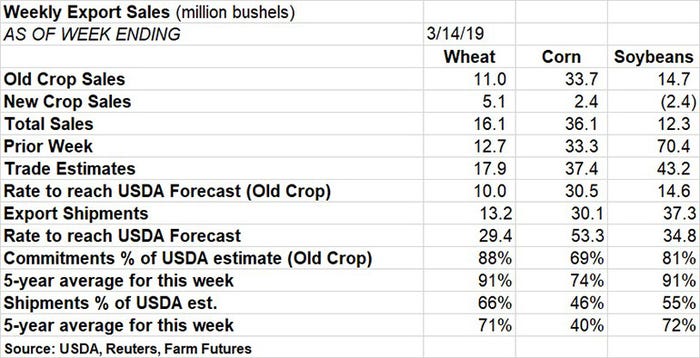
In the case of soybeans, however, those trade guesses were unrealistic because some figured the large purchase by China reported March 11 would be figured in the total reported today, Knorr adds.
“But that deal was included in the data published last week,” he says. “China continues to be the leading buyer, and now accounts for 27% of total 2018 commitments. Still, buyers there added just two new cargoes last week as trade talks try to reach an endgame. Soybean shipments should remain strong into summer thanks to a record book of unshipped sales.”
Sorghum growers also got a little good news from China, which also bought another load of that feed grain, Knorr says. Still, year-to-date exports are near record lows.
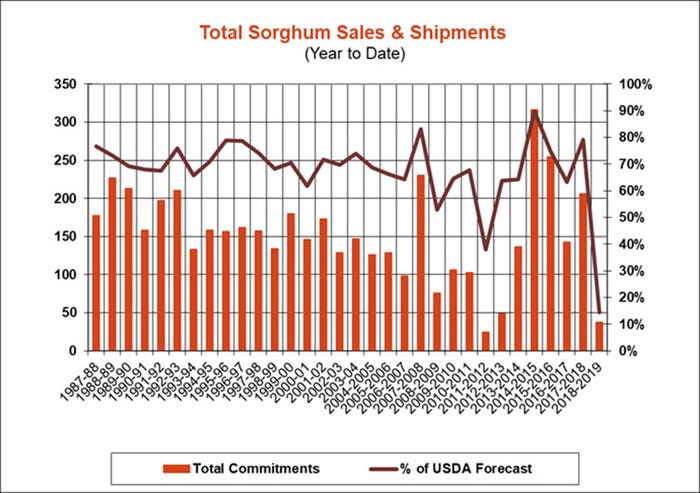
Corn exports saw 33.7 million bushels in old crop sales last week, plus another 2.4 million bushels of new crop sales, for a total of 36.1 million bushels. That was slightly ahead of the prior week’s tally of 33.3 million bushels but below trade estimates of 37.4 million bushels. The weekly rate needed to meet USDA forecasts eased to 30.5 million bushels.
Corn export shipments were for 30.1 million bushels, with the weekly rate needed to match USDA forecasts moving up to 53.3 million bushels. Mexico leads all destinations for 2018/19 corn export commitments, accounting for 32% of the total. Other top destinations include Japan (21%), South Korea (8%), Colombia (8%) and Peru (4%).
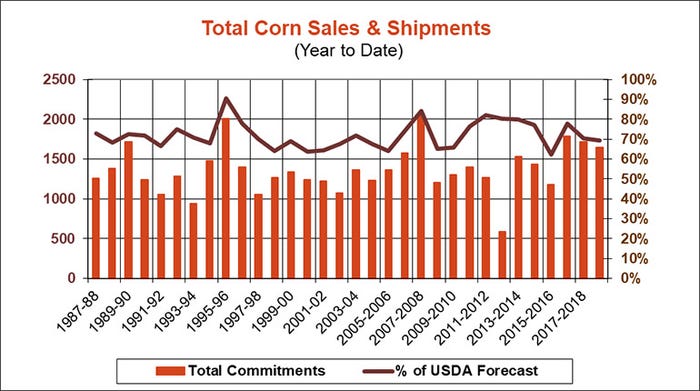
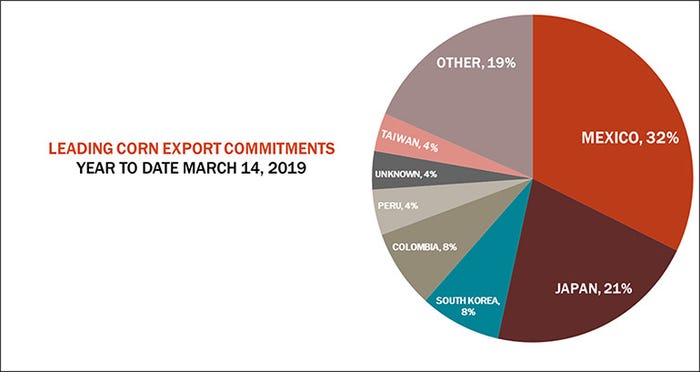
Soybean export sales notched 14.7 million bushels in old crop sales but saw a reduction of 2.4 million bushels in new crop sales, for a total of 12.3 million bushels. That was far below the prior week’s total of 70.4 million bushels and trade estimates of 43.2 million bushels. Still, the weekly rate needed to match USDA forecasts remains a manageable 14.6 million bushels.
Soybean export shipments also stayed ahead of the weekly rate needed to meet USDA forecasts, with 37.3 million bushels. As Knorr notes, China is the No. 1 destination for U.S. soybean export commitment for 2018/19, accounting for 27% of the total. Other top destinations include the European Union (16%), Mexico (11%), unknown destinations (5%), Egypt (5%), Argentina (5%) and Japan (5%).
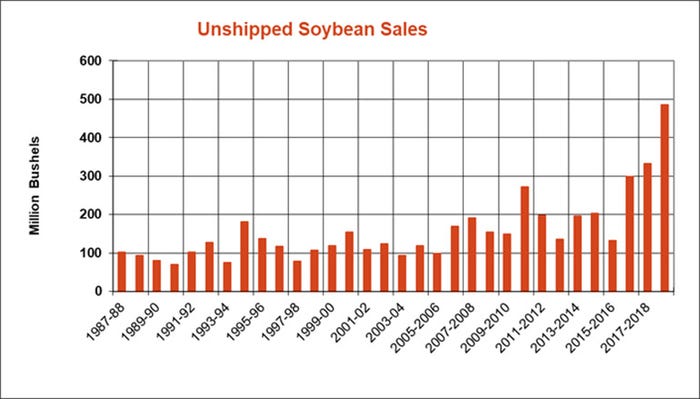
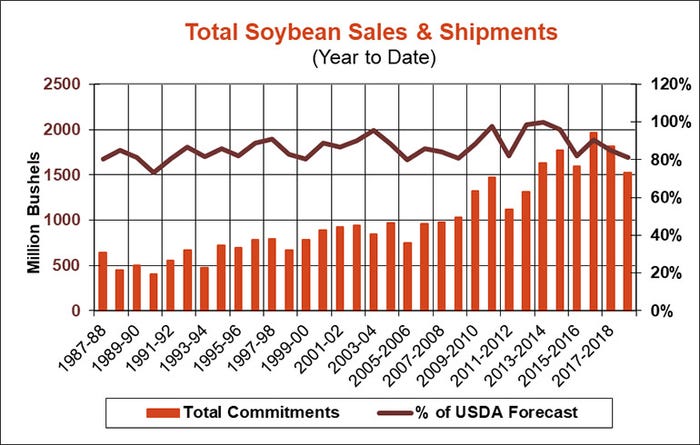
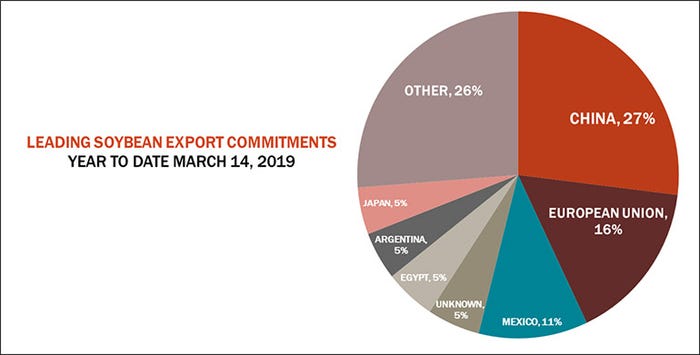
Wheat exports found 11.0 million bushels in old crop sales last week, plus another 5.1 million bushels in new crop sales, for a total of 16.1 million bushels. That moderately beat the prior week’s tally of 12.7 million bushels but fell below trade estimates of 17.9 million bushels. The weekly rate needed to match USDA forecasts fell to a manageable 10.0 million bushels.
Wheat export shipments were for just 13.2 million bushels, meantime, pushing the weekly rate needed to meet USDA forecasts up to 29.4 million bushels. The Philippines and Mexico occupy the top spot for U.S. wheat export commitments, with 12% of the total each. Other top destinations include Japan (11%), South Korea (7%), Nigeria (6%), unknown destinations (5%), Indonesia (5%) and Taiwan (5%).

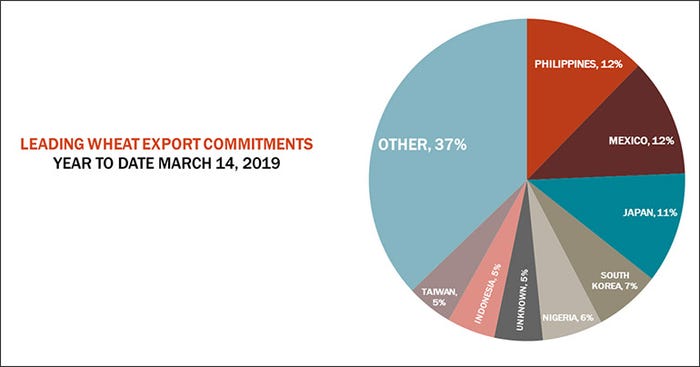
Click the download button below for more charts and graphics.
About the Author(s)
You May Also Like






